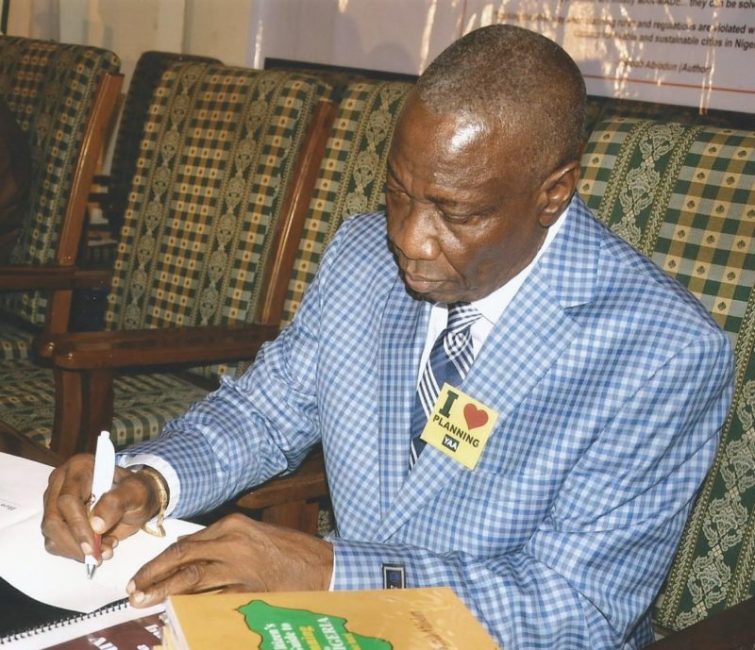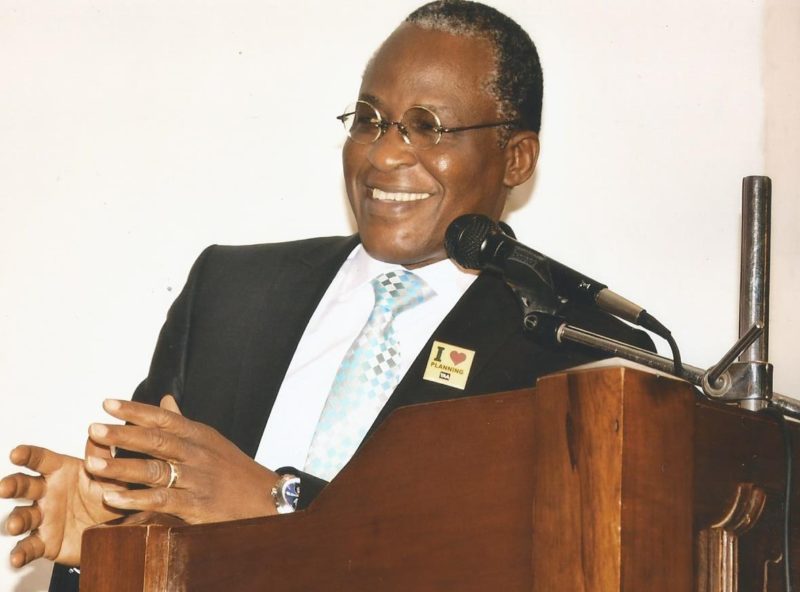Toyin Ayinde, former Lagos State Commissioner for Physical Planning & Urban Development, in a review of “The Citizen’s Guide to Planning in Nigeria: How to get your voice heard” written by urban planner Yacoob Abiodun, says the book should be read because the author has bravely attempted to bring the awareness of planning afore to those who hitherto had very little or distorted knowledge of it

The book is structured into 12 chapters, preceded by quotes on planning by “President Planners”, and a validation of the manual by some distinguished Nigerians.
Yacoob Abiodun is an accomplished town planner who, having paid his dues in a meritorious service delivered over two decades in the Nigerian Federal Civil Service, retired as Deputy Director (Urban Planning).
Of himself, he declares that he is “retired but not tired” and, to prove his point, he has produced two books in 10 years of retirement – not bad for one who is not a professional writer. He ranks amongst the Senior Citizens of the nation, as well as senior practitioners of town and regional planning who must be listened to when they choose to their mouths to speak.

In this book, Abiodun sets forth in a two-pronged manner to address the uninformed and the informed in the field of urban and regional planning. He dexterously pilots his reader from the rudimentary level to a more advanced setting, yet putting it in such an intelligible manner to ensure that the reader is never tempted to go in search of the author’s phone number in order to seek answers to knotty areas of the book.
Well researched and articulately presented, this book is set to break the backbone of ignorance of the uninitiated in the discipline of town planning, as well as help the initiated to correct past mistakes and take up a new determination to do things better that before.
Abiodun offers a departure from the style we are accustomed to: that of identifying the problem, but never proffering any solution. His opening chapter, which is introductory, observes the existence of a “great misconception and very limited knowledge among the citizenry concerning what planning is, what it is for and the way it works. On the part of professional colleagues also lies the erroneous belief that planning is autocratic, that ‘the-king-can-do-no-wrong’ which is the cause of constant conflict between planners and the citizens.”
While I agree with the author, I just continue to wonder why it always takes them retirement from office to see it this way, or to talk about it. So he uses the chapter to prepare a base upon which to launch other facts as he seeks to explain the purpose of the book which he ensured is “devoid of technical planning jargon, mathematical models and statistical analysis” to make it appealing to the ordinary citizen-reader.
He seeks to define urban planning in his second chapter, explaining the purpose and benefits derivable from the exercise which is indeed a process. For the first time, the citizen-reader would be shocked to learn that placing the “RED X” mark on buildings is not urban planning. Thank you sir for this elucidation.
The book in Chapter 3 confirms that the country is replete with legal and policy provisions for urban planning. In many ways, lack of laws has never been the problem in Nigeria. We always have many of them, sometimes replicated in other agencies but we have always lacked the capacity to follow through with the laws.
He emphasises in Chapter 4 that the city belongs to all, planners and non-planners, and that is why survival cannot be left to planners alone. The case is therefore well made for other stakeholders, NGOs, FBOs, community leaders, planning advocates and citizens in general to get involved and build settlements of our dream.
When we all come together to set a vision of a sustainable living environment the result is a planned and well managed settlement. The converse is also true.
The author in Chapter 9 provides a refresher course for practitioners, just for the records, to remind us of what we should never forget. For the citizens it forms a checklist by which you can be certain that your planner has not gone off mark. It is about planning to plan, an analysis of the process of planning.
Chapter 10 s Abiodun’s “Epistle to the Citizens”. He discusses the subject of citizen participation in the planning process, the very reason this book is written. When citizens fully participate in the process of plan preparation, they will give unalloyed support for its implementation because they will assume ownership of such plan.
The author thus encourages the invitation of memoranda from a wide range of stakeholders including members of the public as entrenched in Section D. 13(1) of the National Urban & Regional Planning Law. You must get involved in the planning process by seeking information about local planning activities, keeping abreast with planning information, attending city consultations, participating in focus groups and exploring other forms of engagement. Don’t let the planners hijack the plans of the city. They are only facilitators. I do not agree less.
The author believes that the professional urban planner has a role to play in promoting citizen participation. Rising from the years of military rule which most elderly planners are familiar with, the penchant for dictatorial attitude can be understood but it is not the way with panning if our cities are ever going to reflect beauty and order.
In the last chapter of the book, the author makes the point that innovation in urban planning makes room for improvement in the quality of life available to us while providing opportunity for economic vibrancy. He identifies the key stakeholders that should get involved in this and the role each of them has to play.
In concluding this review, I would like to acknowledge the depth of work that the author has put in. In my opinion, this is the most relevant book today on Citizen Participation for the enhancement of planning practice.
As it coincides the the 70th birthday anniversary of the author, I seize the opportunity to wish him sound health and longevity of life as he joins the Septuagenarian Club.
